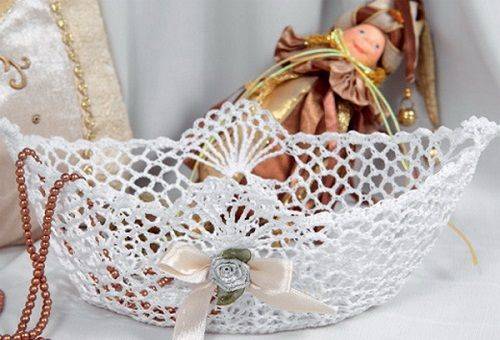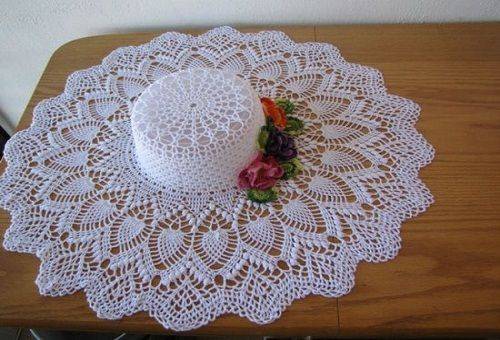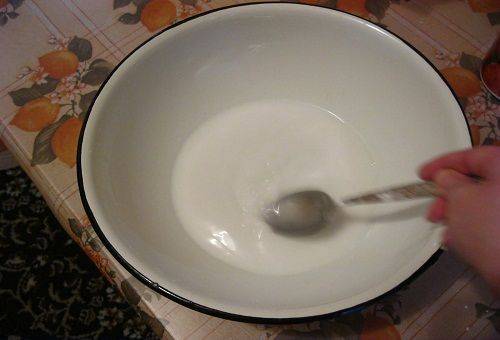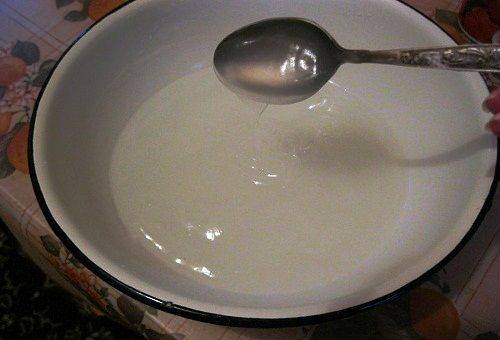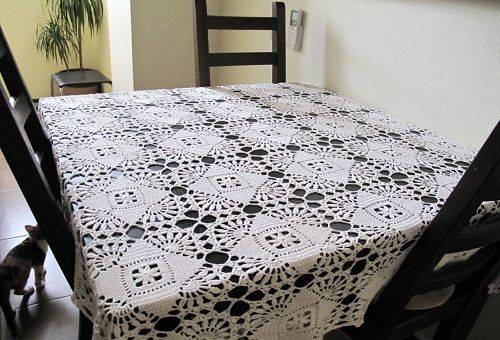How to properly and efficiently starch a crocheted product?
Hand-made garments and household items need special care and processing to constantly maintain attractiveness. If you know how to starch a knitted product, you can count on the fact that it will be protected from external influences for a long time and will be able to delight others.
The fashion for starching crocheted products, whether it be a tablecloth, napkin, collar or an original souvenir, came back several years ago. Today, a similar approach to the processing of clothing and decor is no longer considered old-fashioned, on the contrary, it gives out a skilled and experienced housewife.
The basics of starching things that every housewife should remember
Contrary to popular belief, not all things can be starch. Specific processing is unacceptable when caring for items made of synthetic fabrics, black threads and underwear. In the latter case, this is prohibited due to the fact that such matter does not allow air to pass through, and this negatively affects the condition of the skin.
There are three degrees of hardness of starched things, which traditionally differ in the degree of density achieved depending on the ratio of starch to the volume of liquid used. Despite this, the above indicators can be achieved using other improvised means, only the methods will be different.
- Soft starch. A tablespoon of starch is taken per liter of water. Such processing allows you to give a sharper shape to blouses, shirts, dresses, handkerchiefs.
- Medium starch. One and a half tablespoons of starch is already taken per liter of water. This density is considered optimal for tablecloths and tulle, crocheted, bed linen.
- Hard starching. Two tablespoons of starch are taken per liter of water. The collar and cuffs of a man’s shirt are treated with this solution, they can also be shaped into napkins for table setting, decorative items.
Tip: Beginning mistresses to start a new unusual manipulation is better gradually. Even the dosages given are very arbitrary and their fluctuations depend on the quality of the material. Each for himself chooses the optimal degree of rigidity by adjusting the density of the active product.
Products that are used at home for manipulation
At home, for the preparation of starch composition, it is customary to use the following ingredients:
- Starch. A traditional product that is first diluted with a small amount of cool water, then introduced into the boiling water in a thin stream, constantly stirring. The result should be a transparent composition, which cools and is used to soak the product. Next, the object must be slightly squeezed and given the desired shape, if necessary, fixing the result with a hot iron. If you need to starch a snow-white collar, it is better to take rice starch, and milk is more suitable for breeding it.
- Sugar. For two glasses of sugar we take a glass of water, mix the ingredients and prepare the syrup from them over low heat. Soak the product in the resulting composition, wring, dry areas, if necessary, additionally process with a brush. Spread the pressed object on a towel, straighten it with a hook, fasten with pins, fixing the desired shape. After the product dries, we evaluate the achieved degree of rigidity and, if desired, repeat the procedure.
- PVA glue. The main ingredient is diluted with cold water one or two times, which depends on the required hardness. The object is either omitted into the resulting composition completely (if you need to starfire a snowflake, a removable knitted collar, a napkin), or sprayed from a spray bottle.This approach is most often used to process small elements, hats, and details of carnival costumes.
- Low fat milk. Ideal for light and airy things that do not require pronounced rigidity. The product is usually used in its pure form, but a small amount of starch is also acceptable.
- Gelatin. High-quality replacement of starch, which unlike traditional powder does not crumble and perfectly retains the shape of the product until washing. To handle things crocheted, you need to take a bag of edible gelatin, a tablespoon of fine salt and dilute them in half a glass of water. The resulting composition is placed in a volumetric container in a water bath and stirred until the ingredients are completely dissolved. We dip things into the solution only after it has completely cooled, then we proceed according to the standard scheme.
To starch crocheted things, bedding, souvenirs and other products did not cause problems, you need to remember a number of important points:
- If water gets on the set collar or smoothed napkin, the procedure will have to be carried out from the very beginning.
- You can iron the finished product only after it has completely dried, otherwise it will turn yellow very quickly, and it will be impossible to wash the unpleasant shade.
- Starchy linen should not be kept in a place with high humidity, this is fraught with the appearance of mold on the fabric.
- It is recommended to starch things with sugar in the cool season. In the summer they will attract the attention of insects.
- If a crocheted thing, hat or collar literally stood, then even before drying they need to be placed on a suitable frame in shape.
Care for the starched item also needs to be done correctly. If, for example, the fringe stuck together on the tablecloth during processing, you need to hold it over steam for several minutes and gently spread it with your fingers. If the starched product sticks to the sole of the iron, then the next time it is better to prepare the solution not in water, but in low-fat milk.
